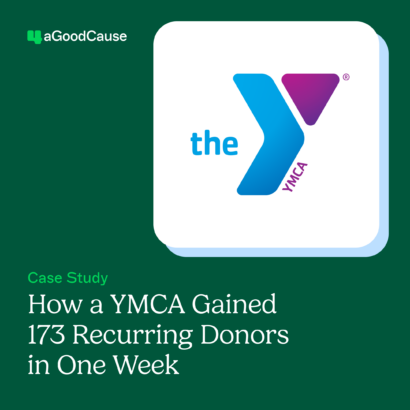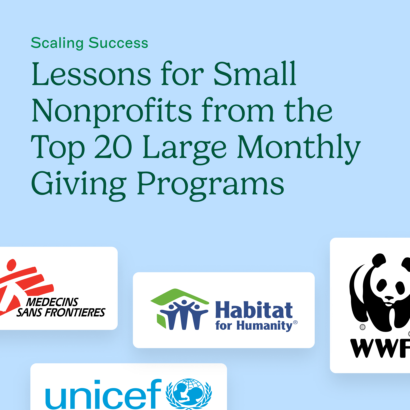Think of setting your fundraising goal as you would any goal in business or in life: make it S.M.A.R.T.
- Specific. Identify numbers and deadlines.
- Measurable. Outline how you will track success.
- Attainable. Make it a challenge, yet reachable.
- Realistic. Raise funds for something the community can rally behind (and that you’re able to communicate/fundraise effectively for).
- Timely. Execute a campaign that is relevant to the needs right now or in the near future.
Keep in mind that setting goals that are too far of a stretch or difficult to achieve can hinder progress. Be aspirational in your fundraising goals but ensure that they are readily attainable. For example: Instead of setting a goal to increase last year’s campaign dollars raised by 100% (likely unattainable) think about an increase in the 25% range – anything more than that is icing on the cake.
Call out your goal
While dollars raised may be the first thing that comes to mind, your fundraising goal can be around many components of the campaign. It could be a dollar amount (raise $150,000); it could be a new donor goal (gain 150 new donors); it could be peer-to-peer based (secure 25 new teams for the event this year). Whatever your goal, write it down and share it with your internal team. Then, share it with the public! It’s a great way to motivate potential donors and show them how close you are to meeting those goals.
Name your impact
The impact drives the goal. Your numerical goals are important, but you also must decide exactly what you are raising money for—a program? A cause? A scholarship? New equipment for recipients? Choose one area of your nonprofit to focus on for the duration of the campaign—something that makes an impact on the community. It’s an easy way to get others involved and show them how their dollars help.
Here’s an example: let’s say your goal is to provide food to 500 children throughout the summer through your organization’s backpack program. What does that mean in terms of dollars needed to make that happen? Use that information in all of your communication pieces to encourage donations. You may send out messages through email and social media that tell everyone you’re raising $10,000 in one day to deliver backpacks full of food to 500 kids throughout the summer. This provides context, visuals and examples to your donors—a great way to show the impact of how their donations help. When you combine the impact the donor can make with their donation, the goal you trying to raise and the 24-hour period – that becomes your fundraising pitch to donors.
Make sure that your goal and impact line up. If it’s a daily goal, it should match the impact you want to make (this goes back to making sure goals are attainable). In the same example, if you were to say you want to raise $100,000 in a day to feed 500 kids over the summer, your donors would question the validity of your goal as it likely doesn’t take that much money to provide the service you’re stating you’d use the money for.
Create urgency
When you spell out your goals and solicit calls to action, it’s great practice to show how far you’ve come to reaching your goal. It’s a fun way to get donors involved, to give them a sense of participation and to encourage them to share this progress with their networks. Displaying a fundraising thermometer on your donation landing page is a great way to show donors a visual representation of where you’re at. And, with 65% of us being visual learners, it provides one more way for us to see the impact we’re making when we donate.
Matching donors for added impact
One of the best ways to generate online gifts is to have a matching donor on board; when donors hear that they can make an even larger impact because their gifts are matched, it encourages them to give in a timely manner. Matching donors can double or even triple donations. Matching gifts are just how they sound: an individual (or company) agrees to match a donation with an equal donation of their own. Most times there will be a cap set. For instance: Dr. Sally Brown has agreed to match donations dollar-for-dollar up to $10,000.
Matching gifts have been shown to have a big impact on fundraising campaigns. In fact, having a match as part of your campaign increases the likelihood of a gift by 22%.
Goal setting is an important part of the fundraising process. It’s especially helpful for specific campaigns or giving days. To learn more about setting fundraising goals specific to a particular day or event, view our free, on-demand webinar: “How Your Nonprofit can Host a Successful Giving Day”. Best of luck as you work to achieve your goals this year!



